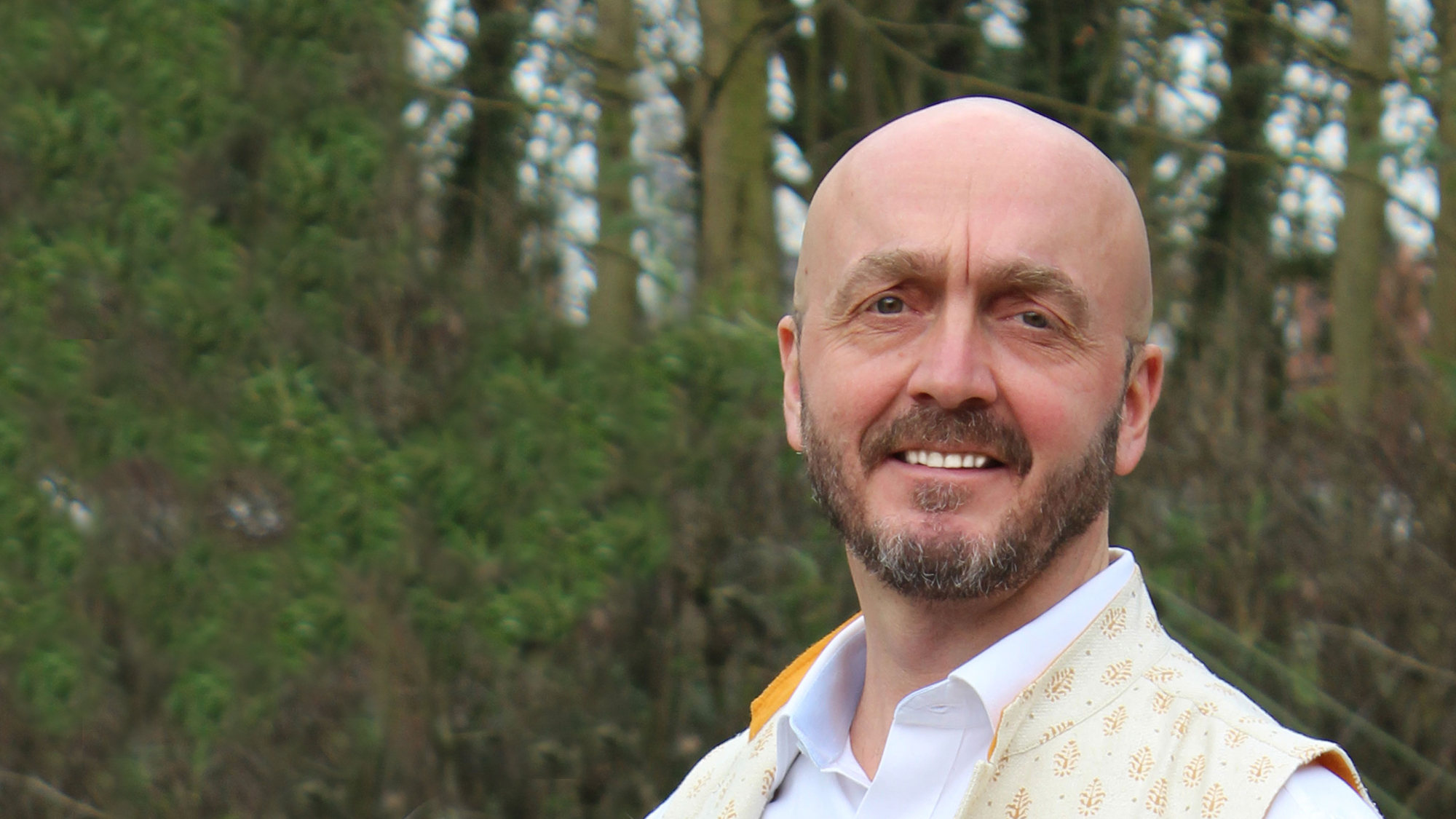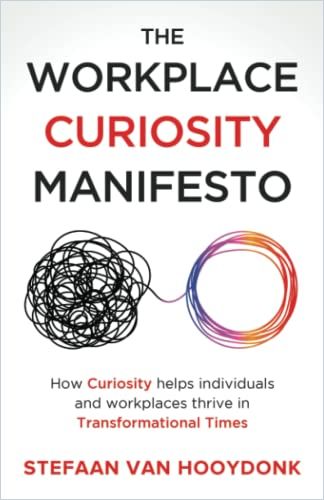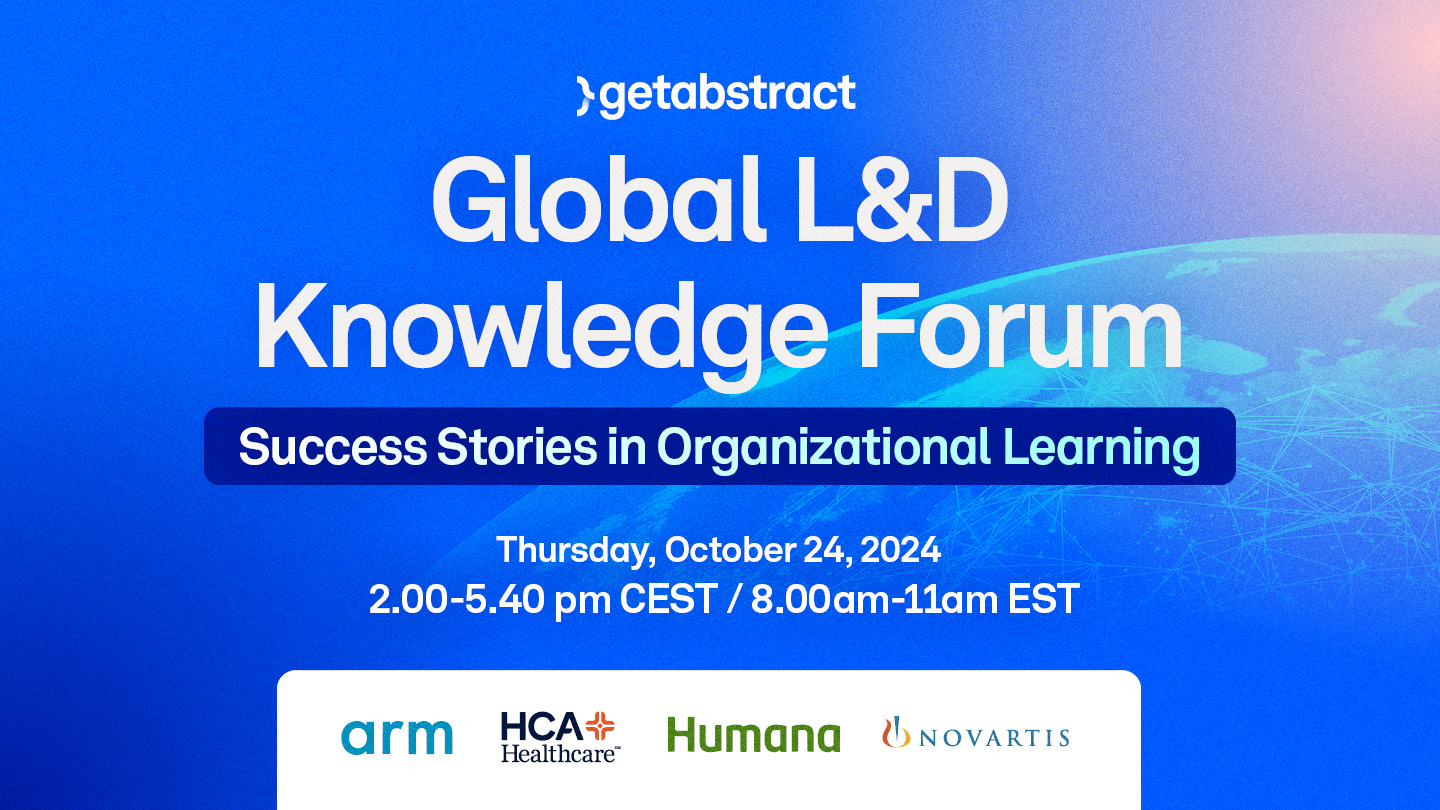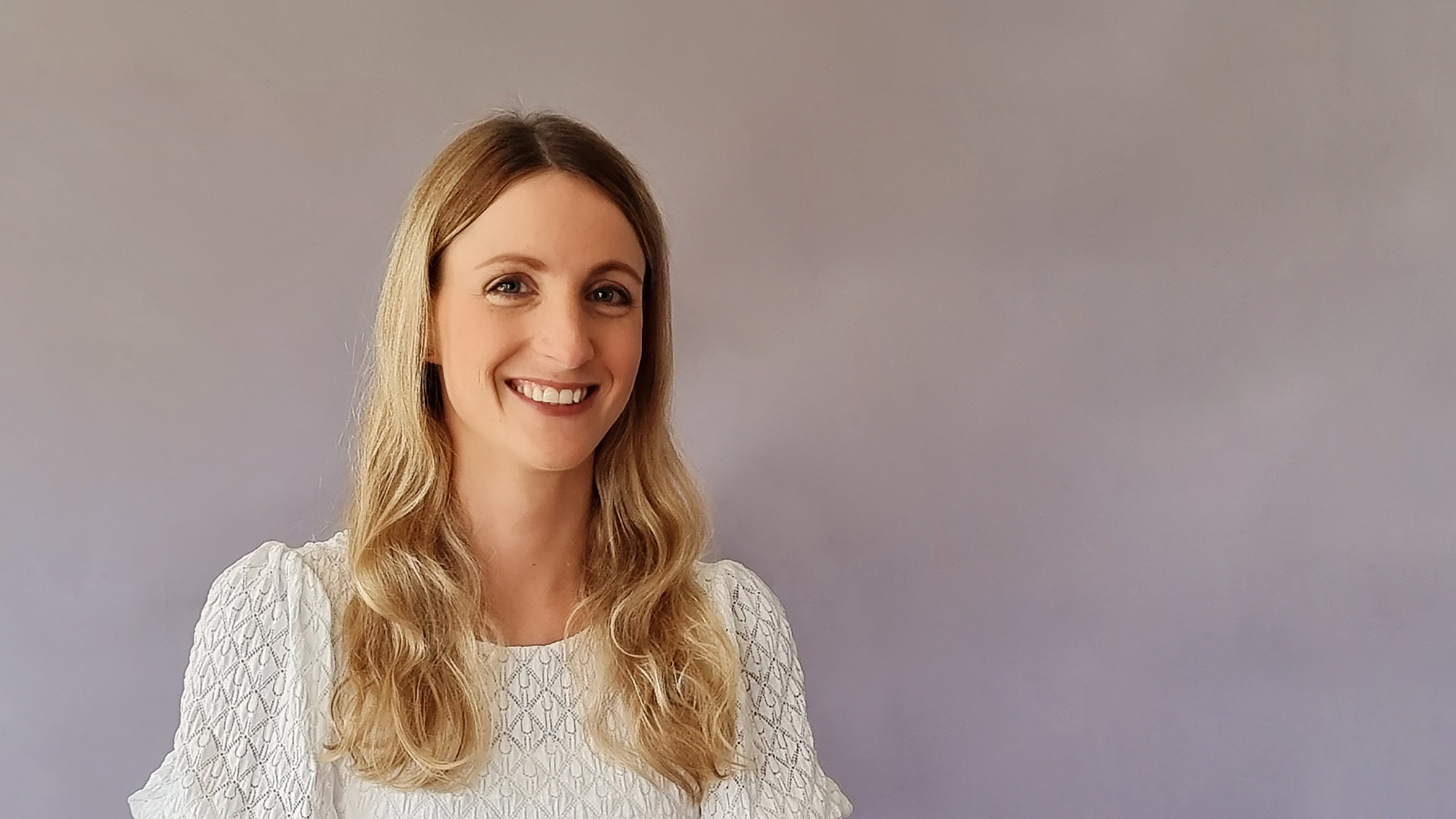“It Doesn’t Matter What People Get Curious About, as Long as They Get Curious.”

Stefaan, you worked in Learning & Development at various well-known companies. Then, you quit, founded the Global Curiosity Institute and wrote a manifesto on “workplace curiosity” – what made you take this step?
Stefaan van Hooydonk: I started in investment consulting in the Far East, in Hong Kong and China, and then, as an extension of that, I set up the executive education arm of a business school. So, I became interested in management, education, and people training in the 1990s. And then, I moved to the second phase of my life: running learning organizations and setting up corporate universities. That’s when I started wondering: Why are there people that are more on top of their game than others? People who are not afraid of asking questions? They are not only interested in their field of exploration but also are more broadly interested in many things. When I started reflecting on this as a Chief Learning Officer, I realized that these people usually form a significant minority in organizations. After digging a bit deeper, I stumbled upon the notion of curiosity. What differentiates those A-players from the B-players is intentional curiosity.
How did you put that knowledge into action?
Well, I was able to do a big pilot within Cognizant. We trained 15,000 people in the notion of curiosity by setting up 45-minute short sessions about reigniting curiosity. We introduced colleagues to neuroplasticity – that it’s possible for the brain to change – and that you can change your habits and behaviors. We gave people strategies about how to become more curious and invited leaders to share their insights with their teams. Then, three months later, we checked in with those people, as we used to do with many of our programs. Did the world change slightly for you, we asked, or are you starting to look at the world slightly differently? And actually, we were surprised that the immense majority of people said: Yes, through that session, you’ve planted a seed in us, and we are starting to be more open to new information and the world.

Did your data reflect this change, too?
My analytics team did some number crunching, and they found that the learning hours of those 15,000 people had jumped on average from 25 to 43 after twelve months, while the rest of the organization stayed flat. And that was a big reason for me to say, wow, this is great – but what are the scientific foundations of this effect? How can we facilitate curiosity to tackle the vast workplace problems evolving from uncertainty and constant change? Unfortunately, I found little research done on this matter. So I left my job and set up the Global Curiosity Institute to help close that gap. I felt this was something worthwhile to pursue. And here we are.
There’s been a lot of talk about a growth mindset for years. But if I understand you correctly now, curiosity fuels this mindset. You can try as hard as you want to grow – without curiosity, nothing happens. Is that right?
Absolutely. And there’s an extra dimension to this: Curiosity is the initial spark that drives openness, inquisitiveness, etc.
Curiosity is a growth mindset in action.
That’s why I believe that not only individuals can be curious, it extends to teams and whole organizations – even societies. Just compare North Korea and Singapore.
Take-Aways:
- There are three dimensions of curiosity: Intellectual curiosity, social/empathic curiosity, and curiosity about yourself.
- While classic L&D strategies seek to solve existing problems, curiosity-based strategies are designed to identify problems in advance and prevent them from arising in the first place.
- Stress, conformity and self-confidence are the biggest curiosity blockers.
In your Workplace Curiosity Manifesto, one of the most exciting books getAbstract covered this year, you write about three dimensions of curiosity: intellectual curiosity about the world, social/empathic curiosity about other people, and intrapersonal curiosity about yourself. How do these different types of curiosity help within an organization?
The typical definition of curiosity in most societies refers to our interest-driven interaction with the world: a child looking at a plane in the sky or Newton examining the nature of gravity – it’s all about the external world. And that leads to growing knowledge, creativity, and innovation. These are the pillars of success in modern business. When comparing the 20th century to the 21st century, one of the significant differences is that the 21st century is much less stable than the 20th century. And all organizations have to deal with this issue. A company like Eastman Kodak could sell film roles for 100 years and only marginally tweak the technology.
And then, suddenly, the environment changes, and you’re out of business.
Yeah, you know the rest of the story. That’s why we must be constantly curious about and open to the environment, new entrants, technological changes, and industry shifts. But when we start reflecting a bit deeper on the other dimensions of curiosity, being interested in others, for example, that leads to something very different than innovation – it leads to empathy. Staying with Eastman Kodak, Mr. Eastman, as an inventor and an entrepreneur, was, of course, very curious about the world. Yet, he was known to be very low on empathy. After all that I’ve read, he did not care much about his peers and the people around him.
So, it’s not a binary thing – being curious or not. You can be high on one dimension of curiosity and not so high on the other.
And most people struggle with the third dimension.
Interest in discovering ourselves?
Yes, because we have fewer tools to do that, or the tools are not as obvious as the ones you can use to grow in the other two dimensions. But the outcome of self-reflective curiosity is resilience, groundedness – and ultimately: happiness. For me, probably that’s the most important one. Because if you love yourself, it’s easier to love others. If you know yourself, it’s easier to know others. And since we’re all working in teams, self-reflective curiosity makes working together much easier and more delightful.
Is there a way to classify yourself when it comes to the level of curiosity? For example, I consider myself curious in all three dimensions, but maybe I’m below average.
Yes, there is. I’ve created a survey where people can find out about their curiosity. It’s free online and available in eight languages and might reveal where you can improve. Because the good news is you can learn to be more curious. You can put teams together so they are more open, and the different types of curiosity even complement and empower each other.
However, curiosity training is not on the menu in many L&D departments yet.
I find it quite strange that most L&D leaders are still focusing solely on what I call primary and secondary skills. Primary skills are business skills. For example, we buy a new machine, so we need to train people on it. We are selling a new product, so we have to teach our sales guys about the product. These are primary skills that are dealing with our core businesses. Then we have secondary skills, which are anything about becoming more professional in leadership, time management, and behavioral skills. But all this is of little use if people are not open to it, or perhaps even are wholly disengaged and “sit through their training.”
More and more companies realize that and have started to explore curiosity: some zoom in on the individual, and others try to improve the environment.
For instance, Merck KGaA, a German company, grasped the opportunity and felt they had the responsibility to train their employees to get better at curiosity, realizing curiosity is fragile, yet their business depends on it. Others, like Novartis, focus on improving the environment: Their mission is to make it easier for people to access learning and democratize knowledge. They make everything they have available for anybody and want everybody to train 100 hours a year.
But don’t people need a spark? You can offer huge knowledge libraries – yet, there has to be something that gets people curious about them.
I think you need both. It would be best if you made learning easy for people. And at the same time, you need to spark their curiosity because people might have a million tools at their disposal and feel uncomfortable with them. They don’t know where to start or to turn to. So, to overcome that, I recommend three strategies, condensed in three words. First is: Awareness. Second: Intentionality. Third: Measurement. First, allowing people to learn on their own and giving them the tools to reveal how much they are curious about the world builds broad awareness. Second, giving people the environment, tools, and habits to become curious makes their learning more intentional.
Can you give an example here?
Intentionality might be something like what McKinsey did when they put curiosity at the top level of their corporate values. They embrace the value of “the obligation to dissent.” An interesting statement: It’s not only okay to have a different point of view but also an obligation to do so – regardless of hierarchy or rank. Google is another great example: They have this 20% project, allowing people to do things they think are worthwhile for 20% of their time at the company. They’ve created beautiful innovations by empowering people. Or, when I was at Flipkart in India, we launched so-called learning wallets where everybody had their learning budget.
They had $300 and were allowed to spend it on whatever they found interesting. Some spent it on Harvard Business Review subscriptions. Great. Others wanted to go around the corner to take a class in flower arrangements. Also good! Some may have invested in a getAbstract subscription only to understand the value of literature classics. Yes, go for it!
It could also be politics, history, anthropology, filmmaking, or anything else because it doesn’t matter what people get curious about, as long as they get curious.
I wonder what an L&D professional would say if I suggested offering more Shakespeare to their salespeople.
Here’s what you explain to him: There is an exciting link between knowledge and curiosity – that it follows an inverted U-shape. If you don’t have any knowledge about something, you are not going to be interested. I’m not going to be curious about his writings if I’ve never heard of Shakespeare. I’m not going to ask any questions about him. So, curiosity happens when I know a little bit about things, and I become more curious when I start growing my knowledge. But when I think I have enough knowledge – that exact moment when I become confident, then overconfident and ultimately arrogant – my curiosity and knowledge both go down. May I give an example?
Please go ahead!
Research found that older doctors are not as good at diagnosing patients as young doctors in North America. That goes counterintuitive because if we need medical treatment, we always seek to talk to older specialists, right? We believe they have lots of experience and know best. But actually, they often rely on their past experience and are not curious about the scientific present or future. The same applies to many L&D professionals: They focus on narrow curiosity because it helps people get deeper and better at their specialization. And there’s nothing wrong with that. It’s good. It would help if you got better at what you’re good at. But:
When you start thinking about it, specialization and learning about specialization always refer to the past. Because you’re always trying to learn something, theories or practices, or tips that other people have figured out before, and you’re trying to incorporate them.
Again, in a stable environment, this works. But in the 21st century, it’s not enough! Broad curiosity, on the other hand, is all about being able to see a bigger picture. It’s not about how to deal with concrete problem-solving. It’s all about what most companies need much more these days: present and future problem identification. Lateral thinking is the only way to do that. And there is a good strategy for everyone to train it: Next time you go to the bookstore, buy the book next to the one you want. When you go to the office next time, take a different route. Be kind and talk to that guy from Finance you always ignored at company events over the past years – invite him for lunch instead.
Speaking of habits and strategies: What is the number one curiosity blocker?
Stress. While a little bit of it is good to invite you to get out of your comfort zone to learn, too much pressure is paralyzing. It brings us into a survival mode. And if we’re in survival mode, we’re not going to be creative. Interestingly, these are the two biggest challenges that many L&D and HR departments face: How do I drive engagement and innovation and ensure my people stay healthy simultaneously? Both issues are closely intertwined via curiosity.
Regarding strategy three, measurement: L&D professionals often struggle to come up with data underlining the positive effects of their learning initiatives. So, how does a focus on curiosity affect the business outcome of companies?
My research shows:
Curious people are more change resistant. Curious people are more engaged. Curious people make faster careers and more money than their incurious peers because of their relentless drive and growth. Greater curiosity in teams and organizations leads to greater innovation and business resilience.
All these benefits are clear. They’re even intuitive. Now the question is, how do companies do this? I’ve worked out quite a bit with companies and created two diagnostics. One is the individual survey we already talked about. The other is how an organization allows curiosity through its culture to its practices and processes.
Is it about qualitative feedback?
Yes. It’s like an environmental scan, and I measure psychological safety, management, leadership, learning culture, innovation, bias, etc. That often helps organizations create a baseline because organizational curiosity cannot be measured. It’s a fluid thing, and most firms don’t even have a clear definition. That is why I’d strongly advise having questions in any company engagement survey that hint toward curiosity and open learning. For instance, I have one question in my team diagnostic: “How long do people have to wait for approvals?” I ask, “Are people working for bureaucracies where it takes weeks to get something done, or is there an open culture that empowers people?” By the way, special attention should be paid to the management staff. Because if a management team, for example, the CEO and their team members, are more curious, surveys show that they are better at improving their company’s operations, leading to tremendous business success. If they are interested in continuous improvement and better at inviting the future and getting into new terrains, their companies also prevail longer. In other words:
Managers who invite curiosity are much more successful than others.
How do curious leaders affect their teams? I wonder in terms of role modeling.
There is a linear correlation: Regardless of their age, if a manager is more curious, their team is more curious, too. If he learns a lot, his team learns a lot. The inverse is sadly also true: If the manager is flat in learning, the team also falls flat. Concerningly, I found that only 23% of first-line leaders are asking for reverse feedback these days. In other words: 77% are not doing so. They’re not asking their team member, how am I doing? And that means that they won’t identify their blind spots and miss many great examples to grow. At the middle management level, it’s about 46%. It’s still hit-and-miss, but it’s better. But at the senior executive level, we’re down to 6%. Think of the grey doctors again, sitting on their throne and supposed to have all the answers: right after stress, conformity and self-confidence are the other big curiosity blockers.
What can organizations do about it? Is there an example you know where you succeeded in sensitizing the leadership?
The Finnish company Fiskars is a good example. They felt their leadership development was ready for a remake. Traditionally they had been looking at leadership development as an outside-in approach. “We invite people to speak about strategy, operations, leadership theories and – to boil it down – all kinds of advice on how a good leader should work.” They changed course and designed their leadership development around an inside-out paradigm. They first invite leaders to explore themselves before exposing them to all the outside information.” So, they focus heavily on exploring their individual values and explore how they fit the organization’s values. Did they articulate them right? How did their commitment change over time? And so on. The new approach was so successful that Fiskars is now rolling it out to the entire organization because they see the value of self-reflection and the power of curiosity. I think it’s a great gift that L&D can give to their organizations in helping them to make a significant change in people’s mindsets and behaviors and, therefore, the organization’s mindset and behaviors.
About the Author
Stefaan van Hooydonk, the former chief learning officer for Cognizant, Flipkart and other leading companies, founded the Global Curiosity Institute. He is also the Dean and cofounder of the Earth Academy.








